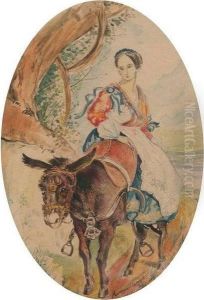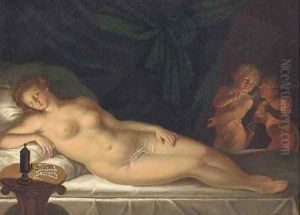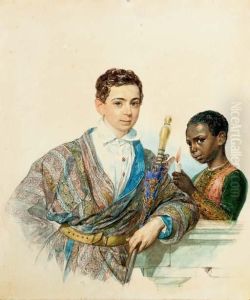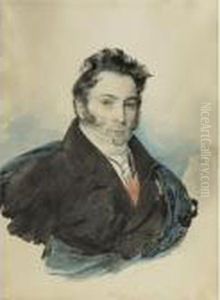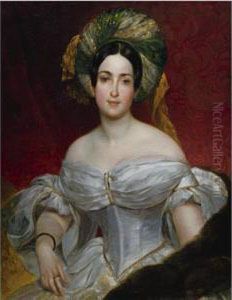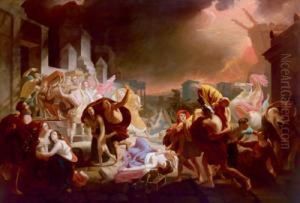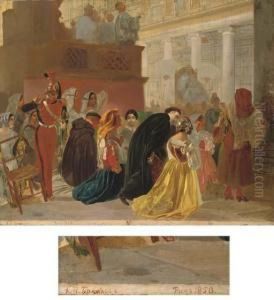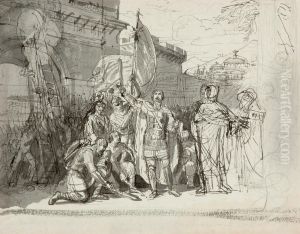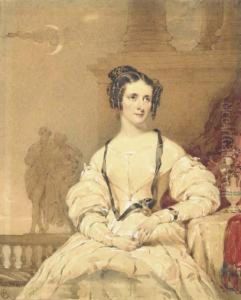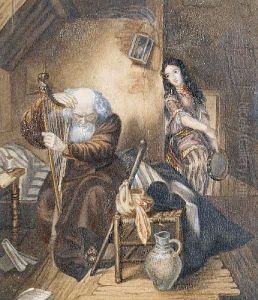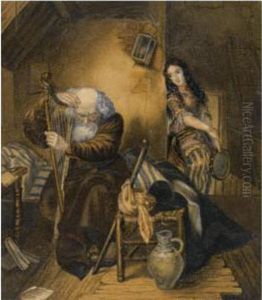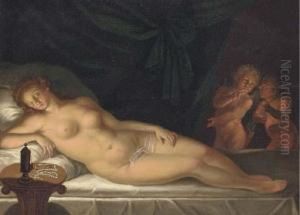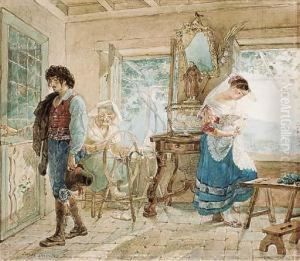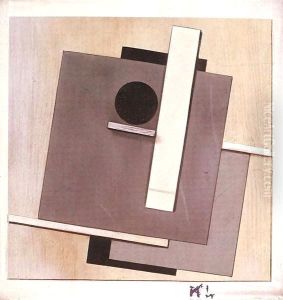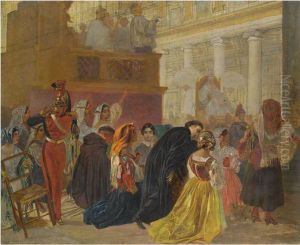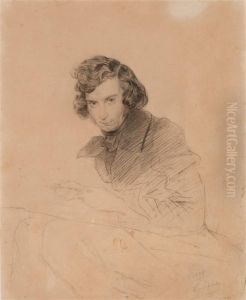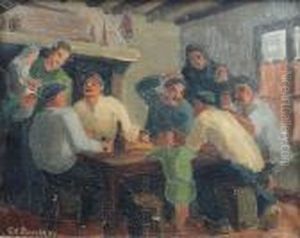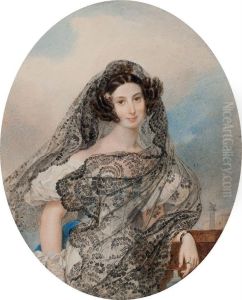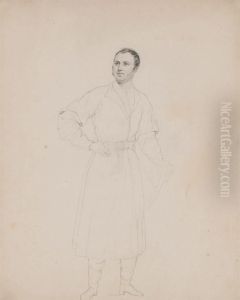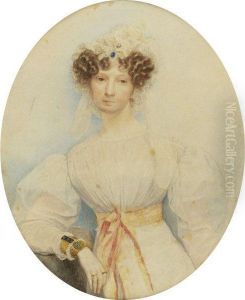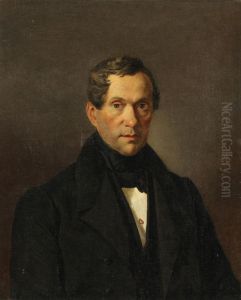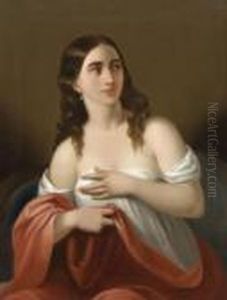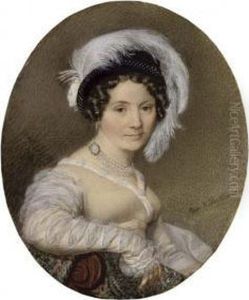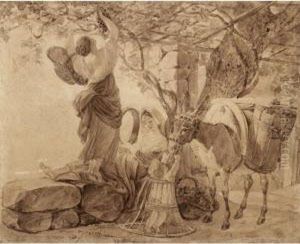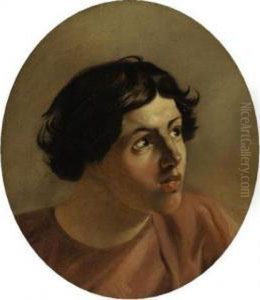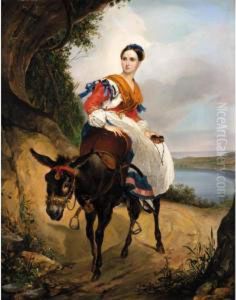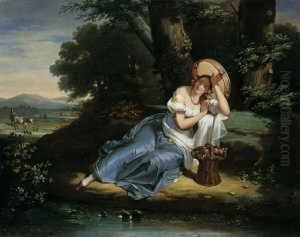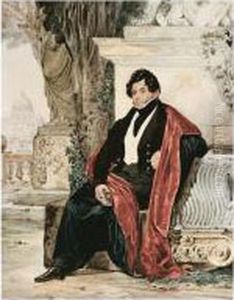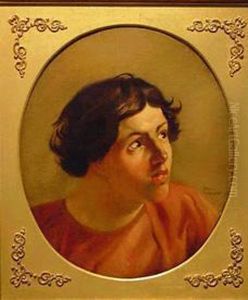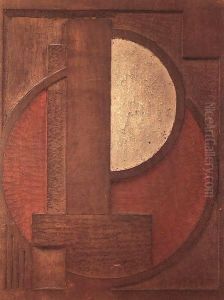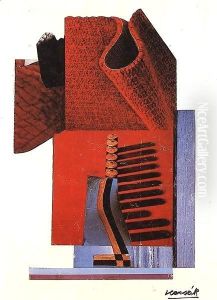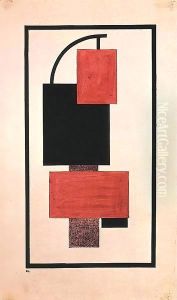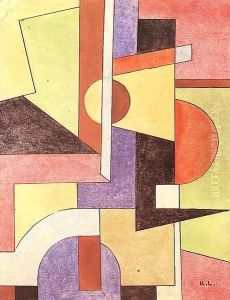Karl Brulloff Paintings
Karl Pavlovich Brulloff, also known as Charles Bruleau, was a prominent Russian painter of the first half of the 19th century, best known for his monumental historical and mythological paintings, as well as for his portraiture. Born on December 12, 1799, in Saint Petersburg, he was part of a family of artists, with his father, Pavel Brulloff, being a sculptor and his older brother, Alexander, also being a painter.
Brulloff showed an early talent for art and was admitted to the Imperial Academy of Arts in Saint Petersburg at the age of ten. He studied under renowned artists such as Andrei Ivanovich Ivanov and Vasily Shebuyev. In 1821, he received a gold medal for his painting 'The Last Day of Pompeii,' which brought him widespread acclaim. The work was inspired by his travels to Italy and the excavations of the ancient city.
After his success with 'The Last Day of Pompeii,' Brulloff's reputation as a master painter was solidified. He spent a significant amount of time in Italy, where he became influenced by the Italian Renaissance and Neoclassicism, incorporating these styles into his own work. His portraits from this period are particularly notable for their elegance and attention to detail.
During his time in Italy, Brulloff became a central figure in the expatriate community and was involved with many influential figures of the time. He was deeply integrated into the cultural life of Rome and was commissioned to produce works for various members of the European nobility.
Brulloff returned to Russia in 1835 and took up a position as a professor at the Imperial Academy of Arts. He continued to paint and also engaged in architectural projects. One of his significant contributions to architecture is the design of the façade for the Mikhailovsky Palace in Saint Petersburg.
Karl Brulloff's health began to decline in the late 1840s, and he left Russia to return to Italy, where he hoped the climate would improve his condition. Unfortunately, he died in Manziana near Rome on June 11, 1852. Brulloff's legacy is preserved in his large-scale historical paintings, which have been regarded as some of the highest achievements of Russian Romanticism in art. His works are displayed in museums across Russia, including the Russian Museum and the Tretyakov Gallery.
